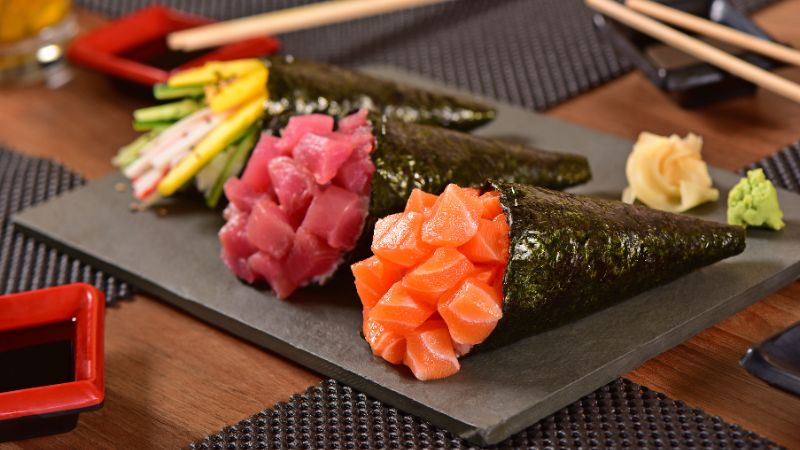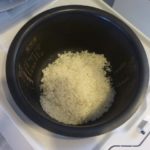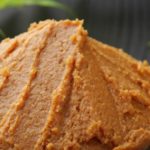Sushi, a renowned delicacy in Japanese culinary culture, originates from the Land of the Rising Sun. It is characterized by its use of fresh and delectable raw ingredients, uniquely combined with rice and seaweed. Among the various styles of sushi, maki sushi stands out as a favorite variation. So, what is maki sushi, and what are its different types? Let’s explore the world of maki sushi in this article!
1 What is Maki Sushi?
In Japanese, “maki” means “roll,” and sushi is a famous dish from this country, primarily consisting of rice, fresh seafood, seaweed, and optional ingredients. Thus, Japanese maki sushi is a type of rolled sushi, similar to hand rolls. The preparation is simple: evenly spread cooked rice on a sheet of seaweed, add ingredients like vegetables and seafood, roll it up, and then cut it into bite-sized pieces.
 Maki Sushi
Maki Sushi
2 Popular Types of Maki Sushi
While the preparation method is similar, maki sushi encompasses various types, distinguished by their unique ingredients.
Hosomaki Sushi
Hosomaki sushi is a type of thinly rolled maki sushi with a diameter of approximately 2.5 cm. It features a dry seaweed layer on the outside and a filling of rice, raw fish, and vegetables. Commonly used fish for this variety is tuna, and popular vegetable choices include cucumber and avocado.
 Hosomaki Sushi
Hosomaki Sushi
Uramaki Sushi
Uramaki sushi differs from most other rolled sushi varieties as the rice is on the outside, while the seaweed and filling are on the inside, earning it the nickname “inside-out roll.” To prepare uramaki sushi, start by placing a sheet of seaweed on a bamboo rolling mat. Then, spread a thin layer of rice evenly so that it adheres to the seaweed. Next, flip the seaweed over and add ingredients such as crab meat, fish, and vegetables. Finally, gently roll and press to seal the ingredients together, resulting in uramaki sushi with rice on the outside.
 Uramaki Sushi
Uramaki Sushi
Futomaki Sushi
Futomaki sushi translates to “fat rice roll” in Japanese, aptly named due to its larger size compared to standard sushi rolls. It has a diameter ranging from 3.81 to 6.35 cm. This type of sushi consists of a seaweed layer on the outside, with a filling of rice, meat, and colorful vegetables. Notably, the larger size of futomaki sushi allows for using three or more meat ingredients in the filling, resulting in a vibrant and flavorful combination.
 Futomaki Sushi
Futomaki Sushi
Temaki Sushi
Temaki, meaning “hand roll” in Japanese, gives rise to Temaki sushi, which is hand-rolled and eaten immediately after preparation. To create Temaki sushi, use seaweed as the outer shell and fill it with rice and familiar ingredients like vegetables, meat, and fish. Then, roll the sushi into a cone shape using your hands and enjoy it right away, as the dry seaweed will absorb moisture from the filling and become soft.
This article has provided an insightful exploration into the world of maki sushi, a unique and delectable part of Japanese culinary culture. We hope that you now have a better understanding of maki sushi and the fascinating dishes that Japan has to offer.







































